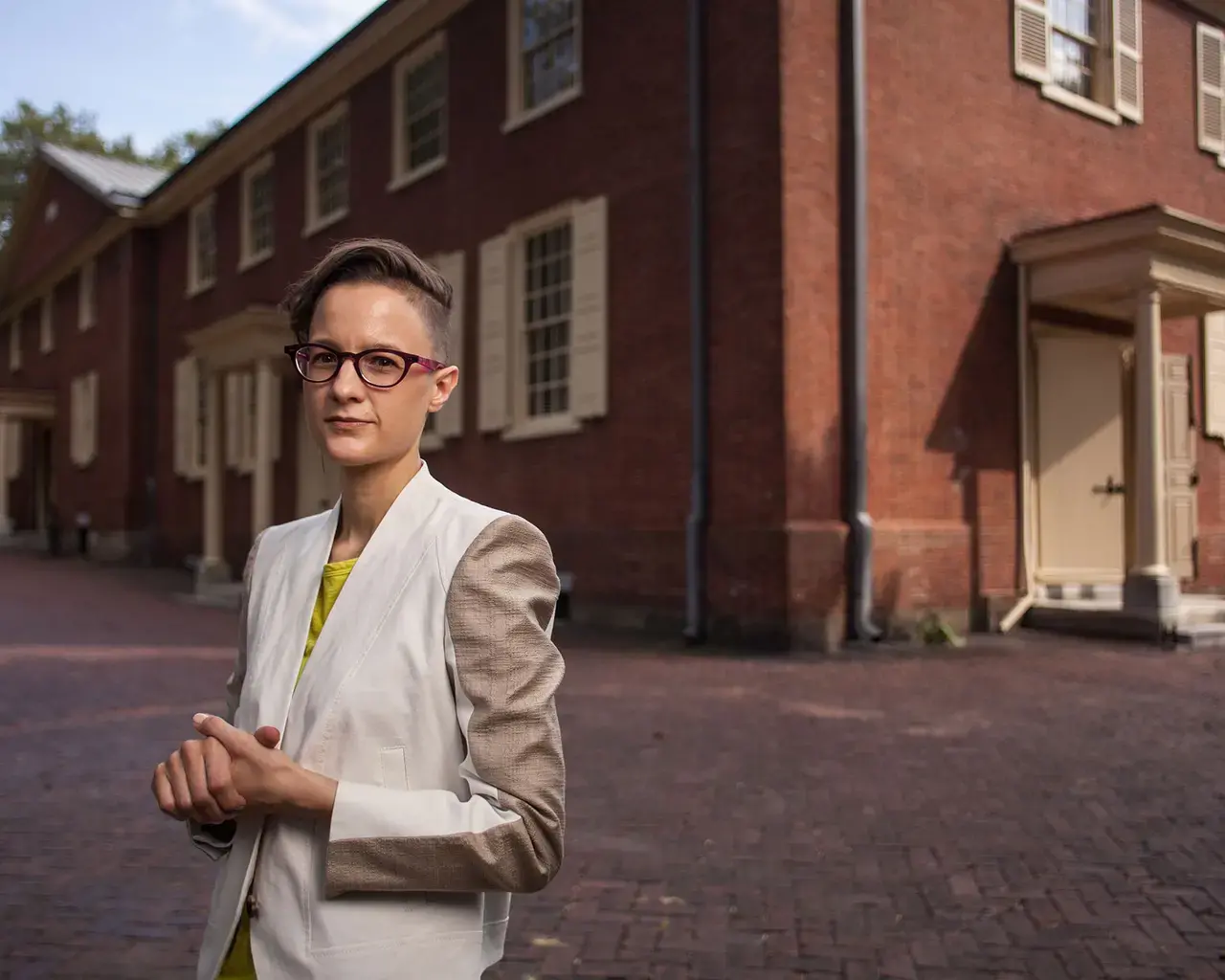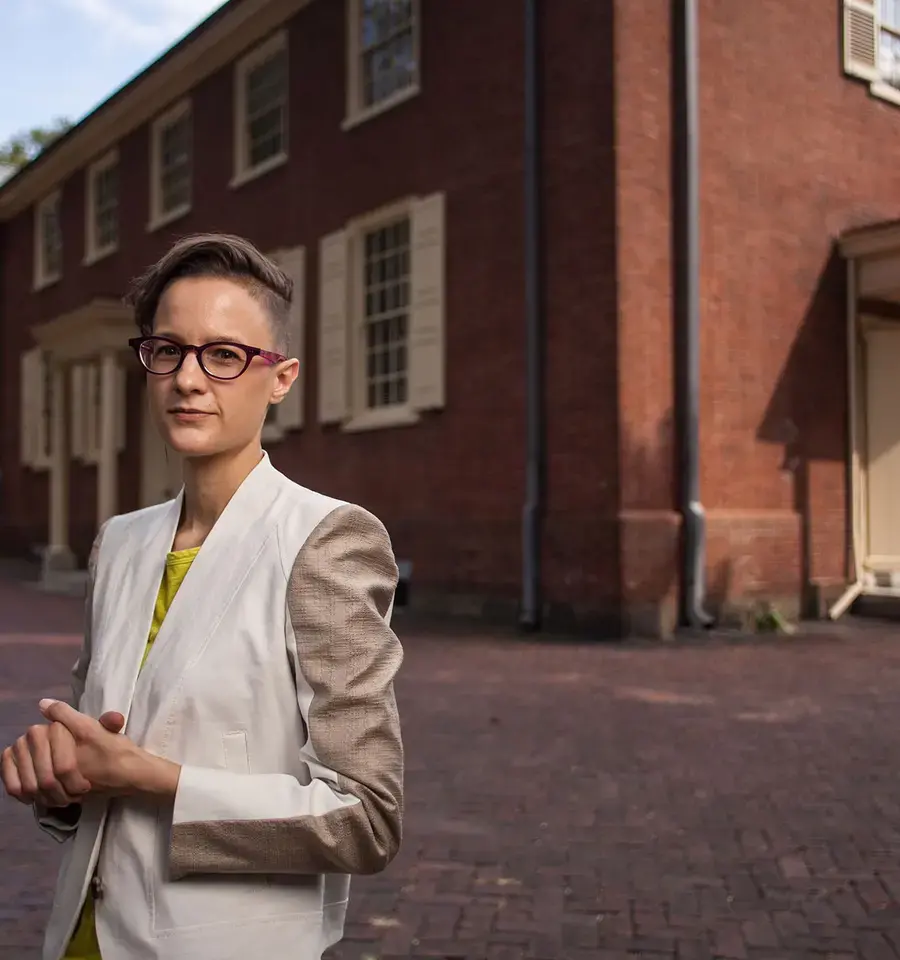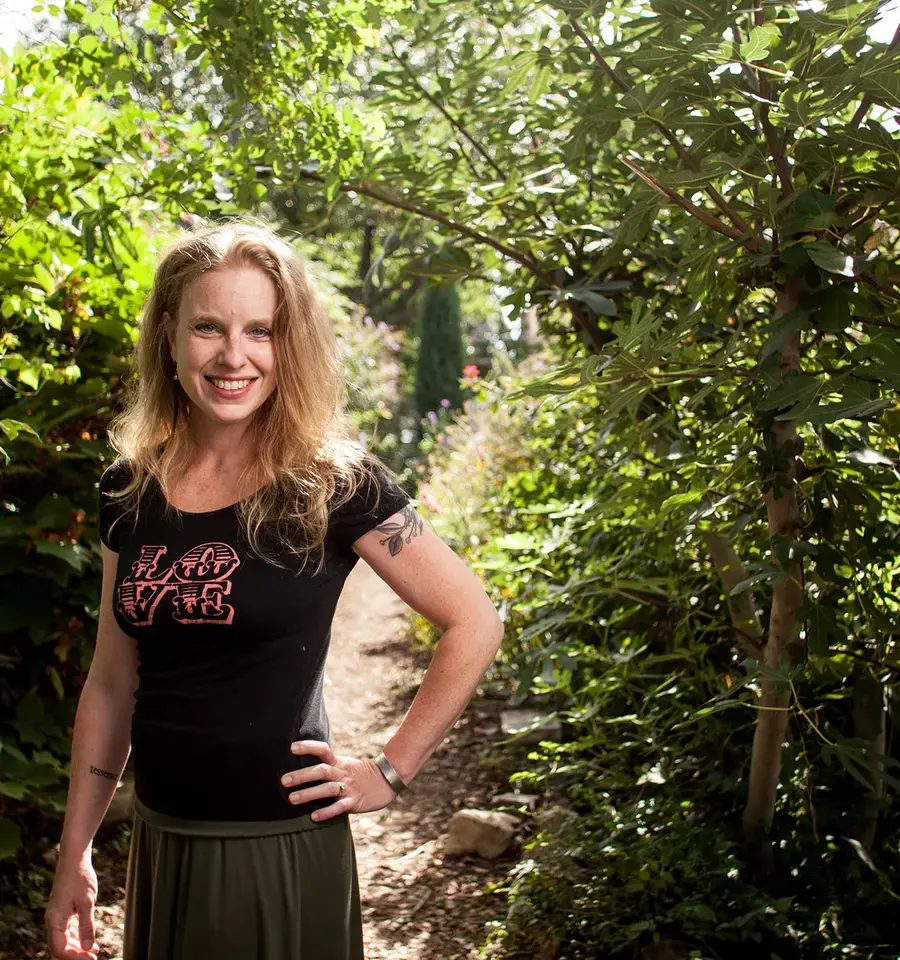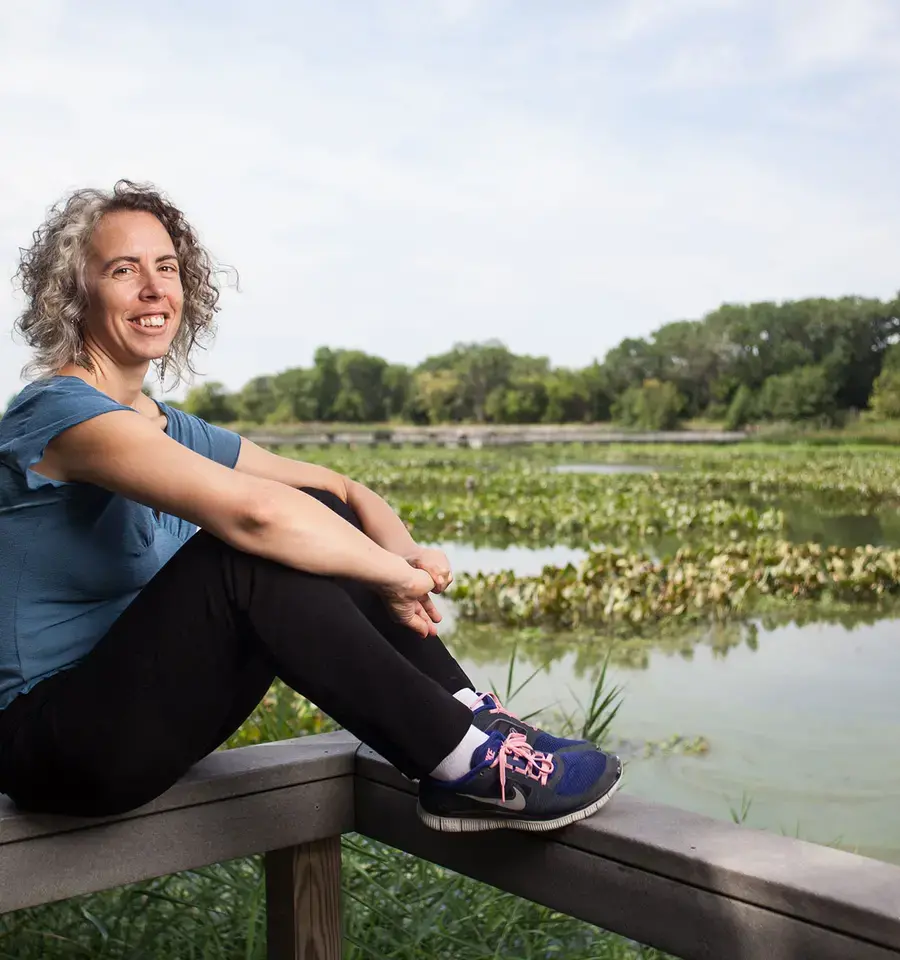"Working collaboratively while still leading the inquiry, I see my role changing from sole author to facilitator."
J. Louise Makary approaches film as a platform to explore, critique, and dissect narratives and their uses. "I am intrigued by their ability to connect us to history, to our values, and to other people," she says. "But I believe that, compelling as they are, narratives must be looked at critically because they are almost always ideological." Makary's films combine dance, still photography, and experimental techniques, introducing unexpected, challenging elements into traditional narrative structure. She is particularly invested in historical narrative—a concern that arose during her time as artist-in-residence with the Philadelphia Society for the Preservation of Landmarks. She shot two subsequent films, Bùxíng and Paloma and Raúl in San Seriffe, at the Powel House, an eighteenth-century historical landmark building in Philadelphia. Her current work-in-progress is Sung's Pilgrims, a film in which historical re-enactors find their role-playing options limited by race or ethnicity, and what can happen when an actor resists portraying the roles that historical record demands. In developing her script, Makary engaged in improvisational exercises with her actors and interviewed historians, costumers, and re-enactors. She was a 2014 summer artist-in-residence at the Skowhegan School of Painting & Sculpture in Maine. Makary holds an MFA in film/video from Temple University.












